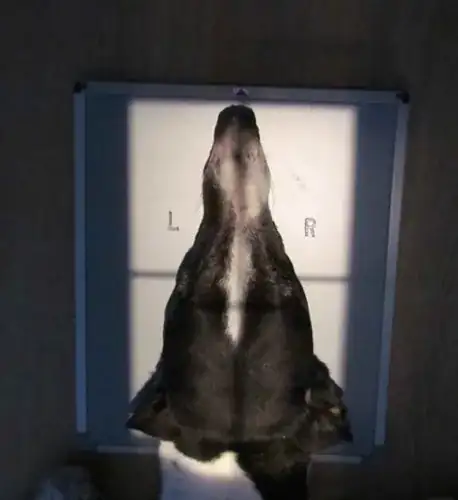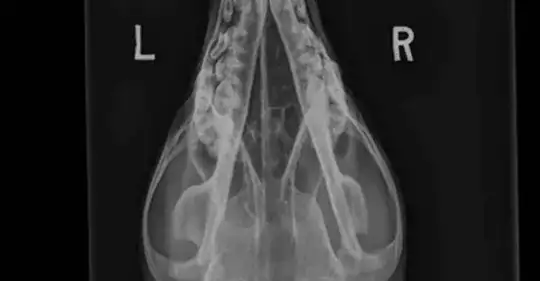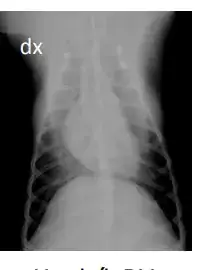When reading radiographs in human health, the x-rays are read as though facing the patient. So, when you have a PA chest x-ray ( or dorsoventral view for a dog ) the x-rays enter the posterior surface, exit the anterior surface to hit the imaging surface. This used to be x-ray film. So, the right side of the chest appears on the right of the film, and the left side on the left. But the sides are switched so you actually read the films as though looking from the anterior side of the patient i.e. facing the patient.
When taking an AP film, the patient is positioned so that the posterior surface is now closest to the film, and the patient's left is on the left of the film. And that's the way the film is read, from the front.
I've noticed some DV images of animals are not switched so that the R is on the left but apparently most are. But I'm guessing that vets also read DV and VD images of the thorax as though facing the ventral surface.
BTW, when taking horizontal or transverse CT slices through the human thorax, the view shown is that from caudal to cranial, i.e. looking upwards to the head.
https://www.radiologymasterclass.co.uk/tutorials/chest/chest_quality/chest_xray_quality_projection
And here's an example of a canine head using the DorsoVentral positioning


and you can see that the image is not reversed which I presume is because this is the normal way to read these type of images.
TL;DR - it's a convention used to reduce cognitive loading on radiologists.


